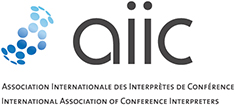Active and Passive Languages
For conference interpreters, active languages are the languages we work into.
Passive languages are languages we work out of. Whilst having an in-depth understanding of them, we do not have the level of fluency required to interpret into them in a high-pressure simultaneous interpretation situation.
ABC Languages
AIIC members classify their working languages as A, B or C, depending on whether they are active or passive languages:
A – Your A language is your mother tongue. Everyone has at least 1 A language.
B – Although a B language is not your mother tongue, you have close to native fluency in this language, and you work into it from at least 1 of your other languages. Not all conference interpreters have a B language.
C – Languages you work from, but not into. C languages are passive languages. Not all conference interpreters have a C language.
In some parts of the world, it is common for conference interpreters to work in both directions, so they only have A and B languages.
In some of the institutions with which AIIC has signed agreements, which have a wide range of official languages, C languages are far more common.


